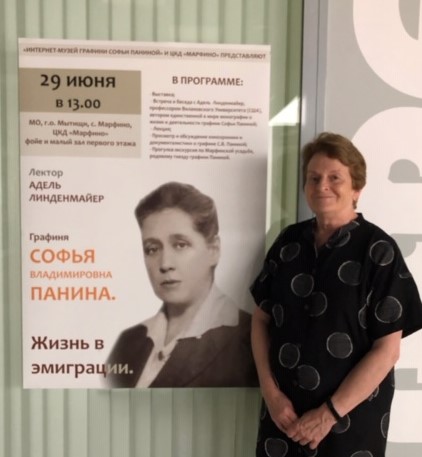Adele Lindenmeyr

Education:
Ph.D., History, Princeton University
Adele Lindenmeyr is the Dean of the College of Liberal Arts and Sciences, and Professor of History at Villanova University.
When did you first develop an interest in Slavic, East European and Eurasian Studies?
As a teenager in suburban Connecticut in the 1960s, I decided to take Russian in high school on a whim. Like many others with no family connection to Russia, I immediately fell in love with the language, literature, and culture. I took my first trip to the USSR with some of my classmates as a high school junior. In college I was fortunate to take courses with Alfred J. Rieber, an experience that led me to change my allegiance from Russian language and literature, my major at the University of Pennsylvania, to history in graduate school. But I retained my strong interest in Russian literature, and I especially cherish the opportunities I had to take seminars with Donald Fanger and Joseph Frank in the 1970s.
What support have you received throughout your career (from ASEEES/other societies/federal support/etc.) that has allowed you to advance your scholarship?
IREX supported my research as a graduate student in the USSR in the 1970s; without that support I simply never would have finished my dissertation and degree. Living in Moscow and Leningrad (in the famous dorm on ulitsa Shevchenko, 25/2) during the Brezhnev era, when “everything was forever,” was a unique experience that influenced not only my formation as a scholar but also my teaching. Generous grants from the National Endowment for the Humanities, the American Philosophical Society, ACLS, the Kennan Institute, and the Dmitrii S. Likachev Foundation enabled me to conduct research in Russia, the US, and Europe for my publications on the history of Russian charity and my biography of Countess Sofia V. Panina, which has just come out in fall 2019 (Citizen Countess: Sofia Panina and the Fate of Revolutionary Russia).
What is your current research/work project?
I continue to focus on modern Russian women’s history, especially during the revolutionary period. My main project at present is a volume co-edited with Melissa Stockdale on “Gender and Women in Russia’s Great War and Revolution,” which we intend to publish in 2020.
What does your ASEEES membership mean to you? How has your involvement with ASEEES helped to further your career?
I attended my first ASEEES (then, AAASS) convention as a graduate student in 1976, in St. Louis. Since then I have seldom missed one. Membership in ASEEES and participation in the annual conventions have helped immeasurably to enrich and advance my development as a historian. In addition to benefitting from the opportunity to present research in progress at the annual meetings, I have forged research partnerships and made lasting friendships through ASEEES.
What do you believe is the most important impact ASEEES has on the field?
The early AAASS meetings I attended in the 1970s and 1980s had a very small visible presence of international scholars, especially from Russia and East Europe. One of the most important contributions of ASEEES since the late 1980s (reflected in the change of its name) has been to provide a meeting place for scholars from around the world and to promote international collaboration.
Besides your professional work, what other interests and/or hobbies do you enjoy?
One love of mine is long-distance hiking. During the Brexit referendum in June 2016 I completed the coast-to-coast Hadrian’s Wall Path in northern England (staunch leavers there), and in September 2019 I trudged through rain and mud along the Derwent Valley Heritage Way, recognized as a UNESCO World Heritage site and the birthplace of the industrial revolution.
